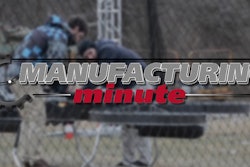Ever since the engineering industry coined the term Industrial Internet of Things (IIoT) a few years ago, many variations on the theme have been born: Industry 4.0, smart factories, the IT-OT convergence, the fourth industrial revolution. Industry conferences were planned. Promises were made. Billions of “dumb” devices waited to get “smart.”
When digital technologies began affecting products and machines, they became interoperable, increasingly intelligent, more autonomous, more mobile and easier to operate. And all of this was good news. So why is the promise of IoT still elusive?
Most companies suffer from a gap between the strategic intent of Internet of Things (IoT) capabilities and their on-the-ground implementations. The reality is that new, smart products are not enough. The focus has to expand beyond individual products into the entire value chain and across entire business models. Companies that are able to expand their focus in this way garner faster time to market, increased flexibility and higher efficiency.
To extract value from IoT-enabled engineering and supply chains, enterprises should consider the following Top 5 points.
- Consider new business models. In pay-per-use models, manufacturers do not purchase the machine itself, they purchase its output. Xerox offers Printing-as-a-Service, Michelin offers tires-per-mile and Rolls-Royce offers engines on a “power-by-the-hour” basis. As IoT-enabled engineering systems generate information, they create opportunities for new revenue and growth. In the product-as-a-service model, responsibility for operations and maintenance shifts to the original equipment manufacturer (OEM), necessitating close partnerships with engineering services providers and contracts built on more specific service-level agreements and more comprehensive managed services.
- Review your maintenance strategy. Enterprises spend trillions of dollars every year on assets they already own. Condition monitoring and analytics-enabled predictive maintenance solutions powered by IoT platforms — particularly those solutions that can significantly reduce engineering implementation and support costs — are showing they can improve uptime, extend asset longevity, reduce maintenance costs and improve safety. Offerings such as Asset Availability-as-a-Service can reduce the total cost of ownership and derive maximum value from the asset over its lifetime. IoT-enabled supply chains and asset management capabilities are turning Maintenance, Repair and Operations (MRO) partners into strategic differentiators.
- Create next-generation Manufacturing Operations Management (MOM). Even with the increased adoption of IoT, most factories still contain multiple generations of systems in which 30-year-old products must somehow converge with newer technologies. What does this mean for gathering production information? Traditional MOM allows manufacturers to plan, schedule, track, analyze and direct their operations. Modern MOM calls for a platform that uses smart machines and materials that can aggregate process data to integrate with internal and external networks. The enterprise control automation standard ISA-95 is likely to disappear and a new service-oriented architecture (SOA) will ensure each asset is properly maintained and available to meet the customer’s service level. This will require a transition to an interconnected, real-time, adaptive, decentralized and self-optimizing production and logistics system.
- Rationalize engineering applications and optimize infrastructure. Too many organizations have programs and budgets to launch smart products but lack the tools and infrastructure on which to develop and maintain these products over time. The operation, management and infrastructure of many engineering tools like computer-aided design (CAD) and computer-aided engineering (CAE) require high-performance computing (HPC) managed by different suppliers. Meanwhile, companies have a plethora of legacy tools and different licensing models they must integrate into their production processes so they can react to changing demands in capacity. This requires rethinking engineering infrastructure strategies. CAE-as-a-Service can enable hybrid-cloud platforms for business groups to realize the benefits of shared services while they offload virtualization, HPC solutions and license management to a capable service provider at a reduced cost.
- Use software and mobility to make agility a new source of value. As companies across industries become more and more involved in making their own software, they must reconfigure themselves into start-up-like businesses to be more agile, focused and lean. This means thinking in fresh ways about combining products, services and data to create entirely new businesses, and using smart products to increase the asset-turnover ratio, leading to higher sales generated for every dollar of capital spent. Ask yourself: are we just building on and extending existing platforms or are we creating new platforms? If so, what will they be? Consider the following three strategic initiatives:
The promise of IoT’s impact on manufacturing is profound, but extracting real, applicable and relevant value from your IoT-enabled engineering and supply chains is a considerable challenge.
Sampath Kumar is a Partner at Information Services Group (ISG). Vishnu Andhare is a Senior Consultant with Information Services Group (ISG).























